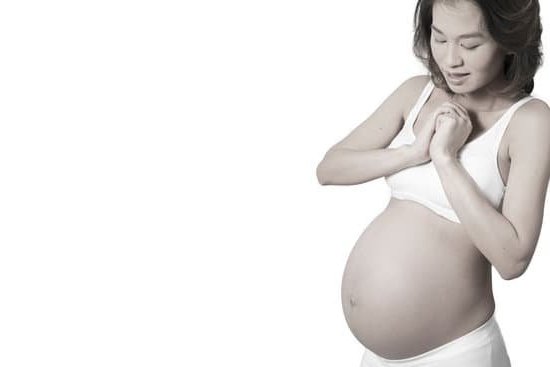Are you wondering, “When should I stop sleeping on my stomach during pregnancy“? As expectant mothers, there are many changes that come with the beautiful journey of pregnancy, including adjustments to everyday habits and routines. One crucial aspect to consider is your sleeping position, especially as your baby bump grows. In this article, we will explore the importance of transitioning to side sleeping during pregnancy and provide tips for comfortable and safe sleep.
During pregnancy, it is essential to be mindful of how you position yourself while sleeping. The way you sleep can impact not only your own comfort but also the health and well-being of your growing baby. In particular, sleeping on your stomach can pose risks as your uterus expands and your body undergoes significant changes. It’s important to understand when it’s time to make the transition to a safer sleeping position that prioritizes both comfort and safety.
As we delve into this topic, we will discuss the potential risks associated with sleeping on your stomach during pregnancy and provide guidance on when it’s ideal to switch to side sleeping for the well-being of both you and your baby. Additionally, we’ll explore strategies for finding comfort in a new sleeping position, including the use of maternity pillows for support.
By prioritizing a healthy sleep environment during pregnancy, you can nurture both your own well-being and that of your growing little one.
Risks of Sleeping on Your Stomach During Pregnancy
Sleeping on your stomach during pregnancy can pose certain risks to both you and your baby. As your pregnancy progresses, the size of your belly increases, and this can lead to discomfort and potential harm when sleeping in this position. Here are some risks to consider:
- Decreased blood flow: As your uterus grows, lying on your stomach can compress the vena cava, the main vein that returns blood from the lower body to the heart. This compression can reduce blood flow to your baby and may also cause dizziness or lightheadedness for you.
- Increased pressure on the uterus: Sleeping on your stomach can put pressure on the growing uterus, which may be uncomfortable and potentially affect proper fetal development.
- Neck and back pain: As your belly grows, sleeping on your stomach may cause strain on your neck and back, leading to discomfort and potential pain.
By understanding these potential risks, you can make a more informed decision about when to transition to a new sleeping position during pregnancy.
If you are wondering “when should I stop sleeping on my stomach during pregnancy,” it is generally recommended that you make the switch by the end of your first trimester or early into your second trimester. This is because as your uterus grows, it becomes increasingly difficult and uncomfortable to maintain a prone position. It’s essential to prioritize comfort and safety for both you and your baby while getting quality sleep during this important time.
When Should You Transition to Side Sleeping During Pregnancy
During pregnancy, it is important to consider the best sleeping positions for the health and safety of both mother and baby. One of the most common questions that pregnant women have is when they should stop sleeping on their stomach. As the pregnancy progresses, the uterus expands and puts pressure on the abdomen, making it uncomfortable and potentially risky to continue sleeping on your stomach.
Risks of Sleeping on Your Stomach During Pregnancy
Sleeping on your stomach during pregnancy can lead to issues such as back pain, decreased blood flow to the fetus, and potential strain on the ligaments and muscles in the abdomen. As the uterus grows larger, it becomes more difficult to lay flat on your stomach without putting undue pressure on this area.
When Should You Transition to Side Sleeping During Pregnancy
Experts recommend that pregnant women transition to side sleeping by around 20 weeks into their pregnancy. This is typically when the uterus starts expanding beyond the pelvic area, making it uncomfortable and potentially risky to continue lying on your stomach. Sleeping on your left side is especially beneficial as it increases circulation to both mother and baby due to reduced pressure on major blood vessels.
As a pregnant woman, you should pay attention to how your body feels when laying in different positions. If you find that you are no longer comfortable lying on your stomach or are experiencing any discomfort or pain, it may be time to start transitioning to side sleeping for a safer and more restful night’s sleep. prioritizing comfort and safety for a healthy pregnancy journey.
Tips for Comfortable Side Sleeping During Pregnancy
As a pregnant woman, your body goes through numerous changes, and this includes how you sleep. It is essential to prioritize safety and comfort when it comes to sleeping positions during pregnancy.
When it comes to sleeping on your stomach, it is generally recommended that pregnant women should stop doing so after the first trimester. This is because as the pregnancy progresses, the growing belly puts pressure on organs and blood vessels, which can make stomach sleeping uncomfortable and even potentially harmful for the baby.
There are physical changes occurring during pregnancy that can make stomach sleeping less plausible as time goes on. The uterus grows larger, the breasts become tender and more sensitive, and back pain may become more prevalent. All of these factors contribute to discomfort when lying on the stomach. Furthermore, as the pregnancy advances, laying flat on the stomach can cause strain on the lower back.
Ultimately, though each woman’s individual experience may differ when it comes to adjusting her sleeping position during pregnancy, most healthcare professionals advise transitioning from stomach sleeping to side sleeping by the end of the first trimester or early in the second trimester.
| Trimester | Recommended Transition Time |
|---|---|
| First Trimester | End of First Trimester |
| Second Trimester | Early Second Trimester |
Importance of Supporting the Lower Back and Abdomen While Sleeping
It is important to prioritize the comfort and safety of both the expectant mother and her baby during pregnancy. One crucial aspect of this is supporting the lower back and abdomen while sleeping. As the baby grows, the mother’s center of gravity changes, putting extra pressure on her back and pelvis. This can lead to discomfort and even pain if not properly supported during sleep.
The American Pregnancy Association recommends that pregnant women avoid sleeping on their backs, especially in the second and third trimesters, as this position can put pressure on a major vein called the vena cava, which can reduce blood flow to the uterus and potentially cause dizziness or shortness of breath. Instead, they suggest sleeping on your left side as it improves circulation to the heart and allows for better blood flow to the fetus, placenta, and kidneys.
In addition to sleeping on their side, expectant mothers should consider using maternity pillows to provide additional support for their lower back and abdomen. These pillows are specially designed to help pregnant women maintain a comfortable side-sleeping position by providing cushioning for their belly and extra support for their back. This can help alleviate discomfort and promote better sleep quality during pregnancy.
| Importance of Supporting Lower Back | Recommendations |
|---|---|
| Supports center of gravity changes | Avoid sleeping on back after first trimester |
| Reduces discomfort and pain | Sleeping on left side improves circulation |
| Promotes better sleep quality | Use maternity pillows for added support |
How to Find the Best Maternity Pillows for Side Sleeping
During pregnancy, finding the right sleeping position can be challenging, especially as your body changes and grows. One of the most recommended sleeping positions during pregnancy is side sleeping, specifically on your left side. This position helps to increase blood flow to the fetus and the uterus, while also reducing pressure on your back and improving kidney function. To make side sleeping more comfortable, many expectant mothers turn to maternity pillows for support.
Benefits of Maternity Pillows
Maternity pillows are designed to provide support and comfort for pregnant women while they sleep. These pillows come in various shapes and sizes, but they are typically longer and firmer than traditional pillows. They can be placed between the knees to align the hips and reduce lower back pain, or under the abdomen to provide extra support. Some maternity pillows also offer neck and head support for better spinal alignment.
Choosing the Best Maternity Pillow
When selecting a maternity pillow for side sleeping during pregnancy, it’s important to consider your specific needs and preferences. Look for a pillow that is firm enough to provide adequate support, but still conforms to your body shape.
Consider the size of the pillow in relation to your bed, as well as any extra features such as removable covers for easy cleaning. It’s also advisable to try out different types of maternity pillows before making a purchase, as every woman’s body is unique and what works for one person may not work for another.
Where to Find Maternity Pillows
Maternity pillows can be found at specialty maternity stores, baby stores, or online retailers. Many brands offer a variety of options to choose from, so take the time to research and read reviews before making a decision. Additionally, some healthcare providers or birthing centers may have recommendations or resources for where to find quality maternity pillows. Investing in a good maternity pillow can make a significant difference in your comfort and sleep quality during pregnancy.
Ultimately, transitioning to side sleeping with the help of a maternity pillow can promote better rest and reduce discomfort during pregnancy.
Alternatives to Traditional Sleeping Positions During Pregnancy
If you are used to sleeping on your stomach, transitioning to a new sleeping position during pregnancy can be challenging. However, it is important to consider alternatives to traditional sleeping positions for the safety and comfort of both you and your baby. When should you stop sleeping on your stomach during pregnancy?
It is generally recommended to avoid sleeping on your stomach once you enter the second trimester, around 13-16 weeks into your pregnancy. This is because as your baby grows, sleeping on your stomach can become uncomfortable and put pressure on the uterus.
One alternative to traditional sleeping positions during pregnancy is side sleeping. Sleeping on your left side is particularly beneficial as it improves circulation to the heart and allows for optimal blood flow to the baby. It also helps relieve pressure on major blood vessels that supply oxygen and nutrients to the placenta. Another alternative is using a maternity pillow, which can provide support for your growing belly and help you maintain a comfortable side sleeping position throughout the night.
In addition to side sleeping, other alternatives include using additional pillows for support or adopting a reclined or semi-reclined position. Some pregnant women find relief by elevating their upper body with pillows or using adjustable beds to prop themselves up slightly while sleeping. These alternatives can help reduce discomfort and ensure that you get quality sleep during pregnancy, which is essential for both your well-being and the health of your baby.
Adjusting to the New Sleeping Position and Getting Quality Sleep During Pregnancy
Adjusting to a new sleeping position during pregnancy can be a challenge, especially if you have been accustomed to sleeping on your stomach. However, making the switch to side sleeping is important for the safety and comfort of both you and your baby. Here are some tips for adjusting to this new sleeping position:
- Gradually transition: If you are used to sleeping on your stomach, it may not be easy to suddenly switch to side sleeping. Start by using pillows or a maternity pillow to prop yourself on your side while still having some support for your belly.
- Experiment with different pillows and supports: Finding the right combination of pillows and supports can make a big difference in how comfortable you feel while side sleeping. You may want to try different types of maternity pillows or body pillows until you find the one that provides the right level of support for your lower back and abdomen.
- Relaxation techniques: As you adjust to side sleeping, it can be helpful to incorporate relaxation techniques into your bedtime routine. This can include deep breathing exercises, gentle stretches, or even prenatal yoga poses that promote relaxation and help prepare your body for sleep in a new position.
Making the switch from stomach sleeping to side sleeping during pregnancy is essential for ensuring the safety and well-being of both you and your baby. By gradually transitioning, experimenting with different pillows, and incorporating relaxation techniques, you can adjust to this new sleeping position and get quality sleep throughout your pregnancy. Remember that prioritizing comfort and safety is crucial for a healthy pregnancy journey.
Conclusion
In conclusion, it is important for pregnant women to prioritize comfort and safety when it comes to their sleeping positions. As discussed, sleeping on your stomach during pregnancy can pose risks such as restricted blood flow and added pressure on the fetus. It is recommended to transition to side sleeping around the 20-week mark, as this position allows for optimal blood circulation and reduces discomfort.
When should I stop sleeping on my stomach during pregnancy? The answer is clear: it’s best to make the switch to side sleeping earlier rather than later in order to minimize any potential complications. Additionally, using supportive pillows and adjusting your overall sleep environment can greatly improve your comfort while making the transition.
Finding the best maternity pillows for side sleeping can also make a significant difference in ensuring a good night’s rest. Ultimately, the goal is to prioritize both comfort and safety in order to support a healthy pregnancy journey. By being mindful of your sleeping position and making necessary adjustments, you can look forward to better sleep and overall well-being throughout your pregnancy.
Frequently Asked Questions
What Will Happen if You Lay on Your Stomach While Pregnant?
Laying on your stomach while pregnant can become uncomfortable as your belly grows. It can also put pressure on the vena cava, affecting blood flow to the baby and causing dizziness or shortness of breath.
When Should You Stop Lying on Your Stomach When Pregnant?
Obstetricians usually advise pregnant women to avoid laying on their stomach once they start feeling uncomfortable doing so, usually around the second trimester. This is when the uterus starts to grow significantly and pressing against it becomes unpleasant.
Can I Sleep on My Back at 14 Weeks Pregnant?
At 14 weeks pregnant, it’s generally safe to sleep on your back for short periods of time. However, as the pregnancy progresses, it’s recommended to avoid extended periods of back-lying due to the potential impact on blood circulation and potential discomfort for both mom and baby.

Welcome to my fertility blog. This is a space where I will be sharing my experiences as I navigate through the world of fertility treatments, as well as provide information and resources about fertility and pregnancy.





